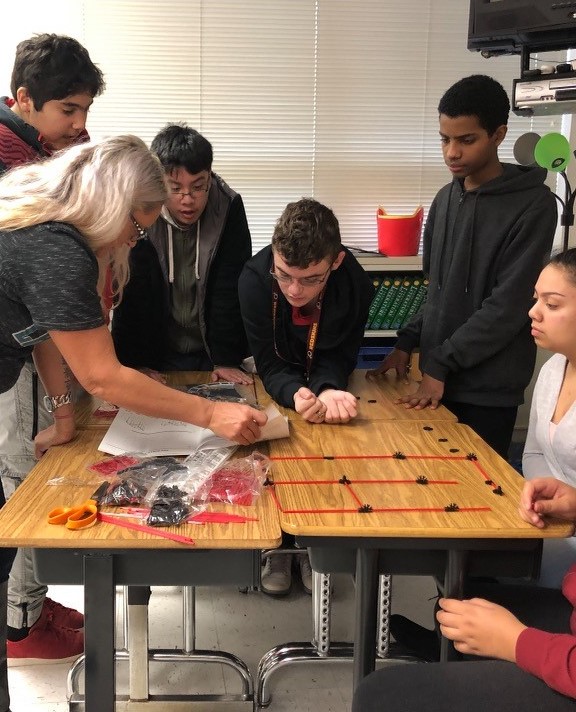How to Better Meet the Needs of Students with Disabilities
Students in Special Education teacher Erin Headson’s Lit Lab 1 class work together to follow assembly directions.
June 11, 2022
Lewis High School needs to offer students a variety of different teaching methods to more effectively meet the needs of all students. For instance, teachers need to use expanded technologies to assist in teaching students with disabilities.
Students with disabilities have difficulty with the use of paper assignments or handwritten worksheets that are handed in each day to teachers. Students with writing problems may also have difficulty reading assignments with handwritten reading comprehension questions to answer. Additionally, making handwritten reading logs with book names, authors and some pages of writing may also be a problem.
When the teacher writes assignments, work, or notes on the white board and asks the students to copy the notes down in a notebook, it creates difficulty for students in meeting the time requirements to copy the information into their notes. Students need more time before class ends to ask questions and complete the writing of the notes. These are just some examples of traditional teaching methods that need improvement.
Lewis High School needs to make more use of electronic teaching software. For example, math assignments should use software programs such as Math Space rather than using paper assignments.
English classes should assign websites that will read the book aloud to the student, highlighting the words being read. This type of reading will help the students understand vocabulary words and increase their ability to read to understand.
This feature is also available for all subjects; the teacher simply provides the chapter assignment, password, and website to the students. This automation tool should be made available to all students freely by teachers.
I am a student who has experienced these difficulties throughout my four years at Lewis High School. My parents had many meetings with staff members to identify alternate methods to provide me with instruction which should have been provided to me freely.
In my previous reading classes, I developed and presented a report on an Iditarod Racing Event in Alaska. My teacher, Erin Headson, was open to the idea that I could give a verbal report rather than preparing a handwritten or computer report.
This alternative presentation method was excellent for my disabilities in handwriting and reading.
I also created a homework folder using my organizational skills. The folder was basic, using one side for homework to be done, and the other side to place my completed assignments to turn in. Something this simple helped me get through my four years at Lewis.
In conclusion, to help ease the frustration of learning, teachers and students can take these simple steps: using of a homework folder, blending a choice of learning options, and providing traditional and non-traditional resources including software.
I would like to recommend that the school consider more software-based classes such as reading logs where the software reads the books to the student and software programs that help teach math on a computer to help solve math equations. Software that listens to words spoken by the student, and then it writes it down would also be beneficial.
I’m a smart student, and any or all of these suggestions would have helped me and countless other students learn more effectively during our four years at Lewis High School.

